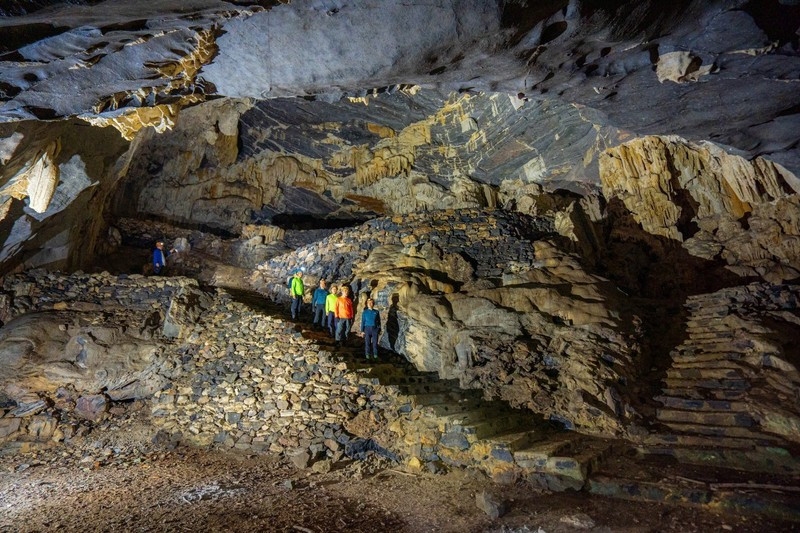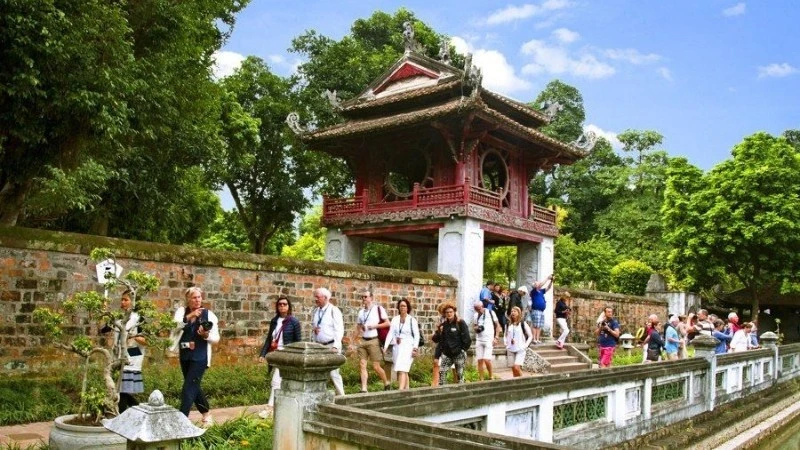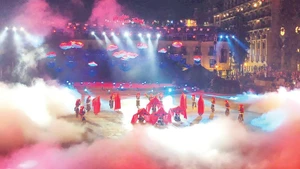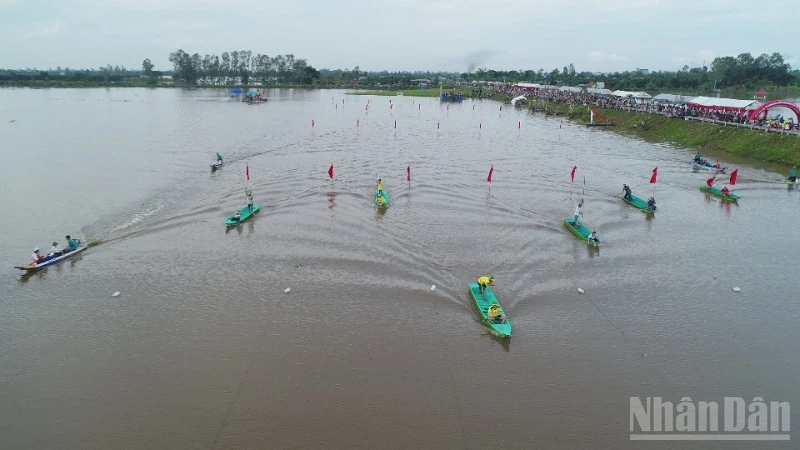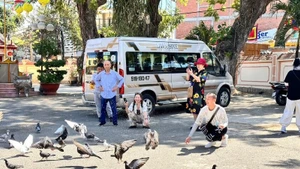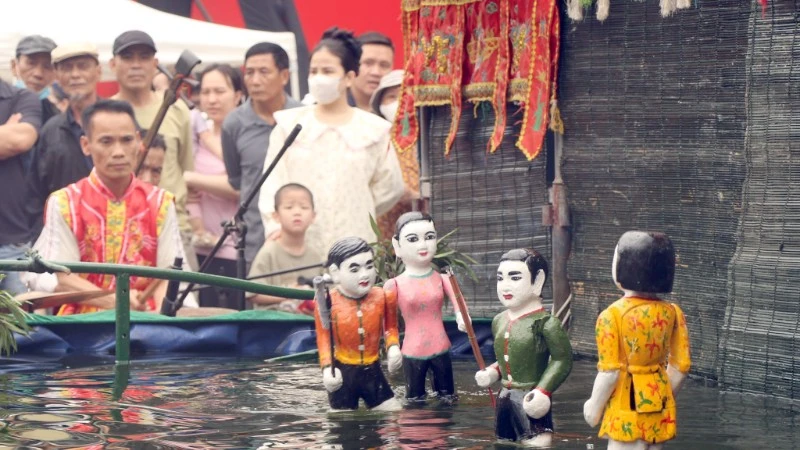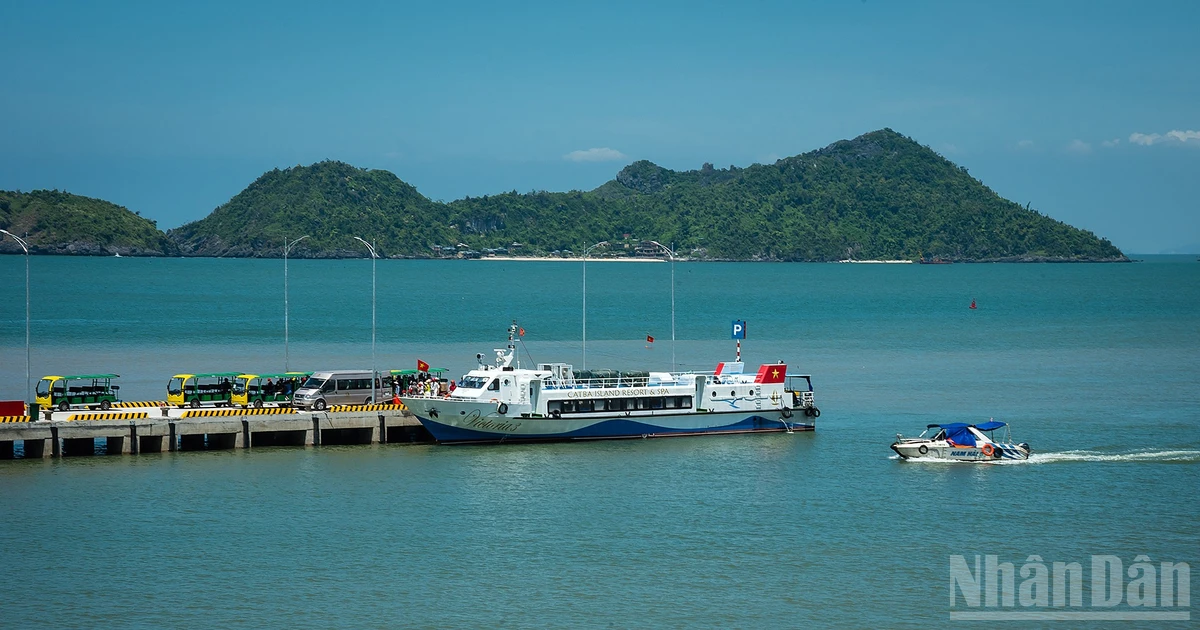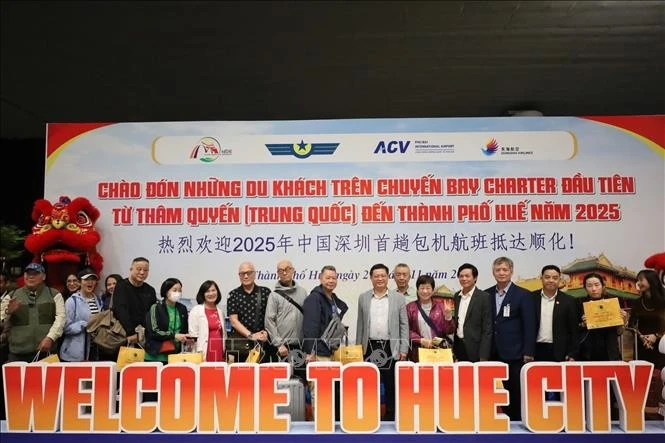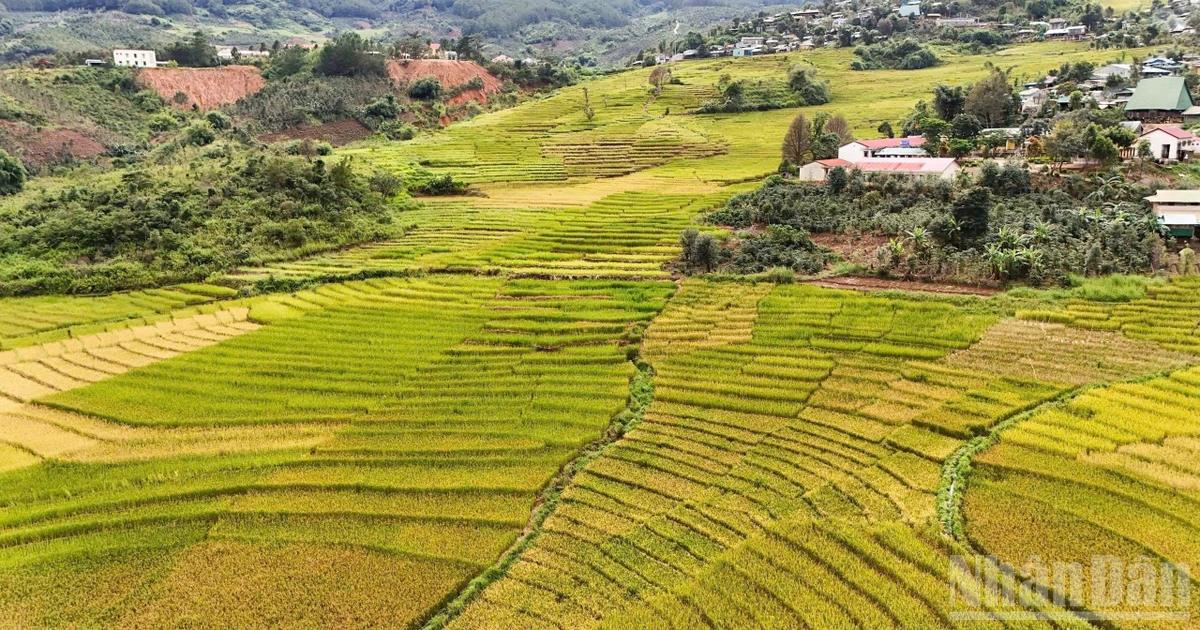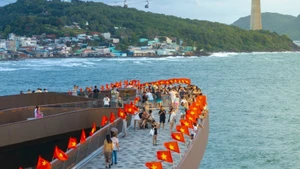Currently, the tourism products in the province are not yet commensurate with its potential, with some tourism products being of low quality and seasonal in nature. With the “Ecological tourism, resort and recreation at Phong Nha-Ke Bang National Park until 2030” project, Quang Binh Province expects to create a breakthrough in attracting tourism development investment and effectively promoting the values of this World Natural Heritage site.
The ecological tourism development project until 2030 identifies nine locations and 11 tourist routes in Phong Nha-Ke Bang that have potential and need priority in calling for investment to develop various types of tourism products.
Potential and mysteries
According to Pham Hong Thai, Director of the Phong Nha-Ke Bang National Park Management Board, the national park features many outstanding global values in geology, geomorphology and biodiversity.
The Phong Nha-Ke Bang limestone massif is one of the largest karst formations in Southeast Asia, with its history dating back more than 400 million years, encompassing all major development stages of the Earth’s crust.
It contains more than 1,000 caves, 425 of which have been surveyed and mapped with a total length of over 230 kilometres, including Son Doong — the world’s largest cave. These are attractive destinations to both domestic and international tourists.
The area also has a diverse and rich flora and fauna system with 2,953 plant species and 1,394 animal species. Among these are 43 newly discovered species and many rare species.
Additionally, the core and buffer zones of Phong Nha-Ke Bang National Park contain many historical and cultural values, such as the special historic site of the legendary Ho Chi Minh Trail, Road 20, the Cave of Eight Young Volunteers, the drum-beating festival of the Ma Coong people, and the new rice celebration festival of the Bru-Van Kieu people.
With these values, the national park, which covers more than 123,000 hectares, has twice been recognised by UNESCO as a World Natural Heritage site.
From having only two tourism products — visits to Phong Nha Cave and Tien Son Cave — Phong Nha-Ke Bang National Park now offers 17 different tourism products, including world-class tourism experiences such as those conquering Son Doong Cave and En Cave.
After 22 years since being recognised as a World Natural Heritage site, the total number of visitors to Phong Nha-Ke Bang National Park has reached nearly 11 million while tourism revenue has reached approximately 2 trillion VND (about 78.7 million USD).
However, according to the Park Management Board Director, the quality of some products is not yet commensurate with the heritage site’s resources, while tourism remains seasonal and there is overlap in products, making them not truly attractive to tourists.
Meanwhile, the park’s tourism development potential remains huge, as it not only has a beautiful and attractive cave system but also seemingly endless mysteries beneath its primary forests.
We had the opportunity to visit the area of Calocedrus rupestris (known as bach xanh da in Vietnamese) discovered in 2004, which is a rare, globally endemic plant species now found only in the evergreen tropical forest of Phong Nha-Ke Bang.
Calocedrus rupestris is a large coniferous, evergreen tree species with a broad canopy; it reproduces through seeds and is considered the most unique forest habitat due to its global importance and conservation value. It is classified as endangered in the IUCN Red List.
Currently, Calocedrus rupestris is concentrated mainly in the limestone mountain area within the strictly protected sub-zone of the National Park’s core zone, covering an area of over 5,000 hectares. The presence of this ancient and endemic plant species is scientific evidence confirming the pristine nature and unique biodiversity of Phong Nha-Ke Bang National Park.
During wartime, U Bo was once a fierce battlefield in Quang Binh, but now, tourists can drive from the Tra Ang Bridge intersection along the western branch of the Ho Chi Minh Trail for a while, then stop at Km51 to begin their journey conquering U Bo with its beautiful and captivating scenery.
Upon reaching U Bo Peak, one truly understands the accuracy of the song lyrics about the dreadful weather of Truong Son more than ever. From an elevation of over 900 metres, visitors can easily survey the vast primary forest below.
On sunny and clear days, from U Bo Peak, the distant view of Dong Hoi City with its blue sea, golden sand beaches, and high-rise buildings appears like a beautiful painting. In the near future, Quang Binh Province will permit the opening of tourism routes to explore the Calocedrus rupestris community in the high mountains and discover the natural beauty of U Bo Peak, promising to bring many exciting and unique experiences for tourists visiting the majestic Truong Son forest range.
New products, new experiences
Pham Hong Thai, Director of the Phong Nha-Ke Bang National Park Management Board, said the Quang Binh Provincial People’s Committee has recently identified 20 areas to call for investment in developing various types of tourism products, including 9 locations covering approximately 342 hectares and 11 potential tourist routes in Phong Nha-Ke Bang National Park.
These new tourist spots each have their own unique characteristics and appeal. While the ecological tourism site with its zoo experience offers typical tourism products that can be developed for educational visits, scientific research, environmental education and recreational services, the high-end resort tourism site at Km7 on Road 20 is oriented towards developing a resort or hotel complex of five-star quality or higher.
Additionally, several tourism sites such as the Nui Doi semi-wild animal area, high-end resort tourism in the U Bo mountain area, Chay Waterfall eco-tourism, Ba Tay Hill resort tourism, high-end resort tourism at Tram Na Cave, and so on, are oriented towards development as eco-tourism sites, wildlife observation points, and locations for exploring historical and cultural values, building resorts or luxury hotels, mountain climbing, stream bathing, and kayaking.
Along with these, the National Park has 11 areas with unique and mysterious potential being developed into tourist routes, including nature exploration of Re Khe Forest; exploration of Ca Roong Kling Acu Cave; nature experience at Vom Gieng Vooc Cave; nature discovery at Chi Huy Cave, Cay Sanh Cave and Bai Cave; conquering U Bo Peak and experiencing nature on Truong Son Peak; and exploring the over-500-year-old Calocedrus rupestris community growing on limestone mountains at elevations above 600 metres.
According to Thai, shortly after the announcement of Quang Binh Province’s decision approving the ecological tourism, resort and recreation project for Phong Nha-Ke Bang National Park until 2030, many tourism businesses have come to explore investment opportunities. The first projects have started, from documentation procedures to administrative decisions, including committed investors who have already created some famous products associated with the Phong Nha-Ke Bang World Natural Heritage site.
The Ba Tay Hill area — a resort tourism project designed to lean against the mountain face while overlooking the Son River — uses environmentally friendly construction materials that complement the landscape, promising to bring a fresh and attractive experiences to tourists staying in the centre of the tourist town of Phong Nha.
The nature exploration project at Chi Huy Cave, also known as the Seven-Level Cave, is also being rapidly developed by businesses. While this cave’s stalactites are not as prominent as other caves, it served as a military barracks and storage facility for Vietnamese troops during the American resistance war, resulting in its spacious and flat interior.
The business investing in this tourism product combines natural exploration with historical experience through the application of digital technology, allowing visitors to experience the sounds of bombs, bullets and transport vehicles moving through the forest during the war years.
With 20 areas of unique value in geomorphology, geology, natural landscape and historical culture, the Phong Nha-Ke Bang National Park Management Board is committed to coordinating and providing the best conditions for businesses and investors to conduct on-site surveys in potential areas.
At the same time, they will provide comprehensive information about natural, social, climate, geological, and terrain conditions to help investors form ideas and develop feasible solutions for investment projects.
The goal is to transform potential heritage values into distinctive and unique tourism products, thus ensuring that heritage is not just a title but is sustainably preserved while bringing economic value to the community.
